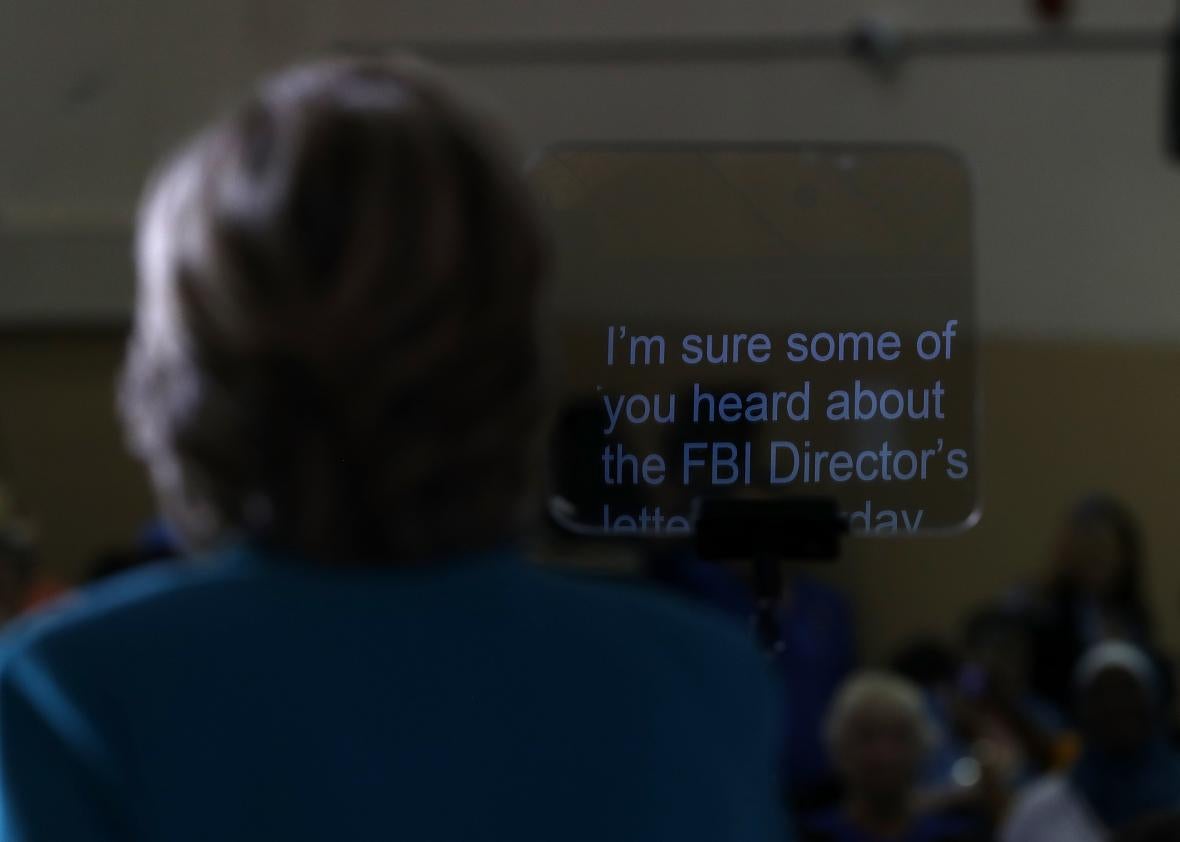Ever get the feeling that the presidential polls are fluctuating because the storyline of this election needs them to?
Following the re-emergence of Hillary Clinton’s email troubles, it’s time for another round of polls showing the presidential race tightening. The last time we went through one of these tightening cycles was in September, when Clinton went wobbly-kneed due to a belatedly revealed bout with pneumonia and referred to many of Donald Trump’s supporters as “deplorables.” Then, Clinton opened up a comfortable lead again amid a slew of Trump scandals and three debates she was widely agreed to have won.
Data-driven political reporting is supposed to liberate us from the tyranny of media-driven narratives. While pundits and reporters flip out over each day’s gaffes and mini-scandals, more intelligent observers follow the numbers. But this year in particular, the numbers—both the polls themselves and to a lesser extent the probabilities on sites like FiveThirtyEight and the Upshot that incorporate those polls—have fluctuated wildly, usually following those very gaffes and mini-scandals that smart observers are supposed to disregard as noise. In an election this polarized, are voters really vacillating back and forth between these candidates?
As the Upshot’s Nate Cohn argued convincingly Monday, the higher than normal level of fluctuation in this race is probably due to the large number of voters unhappy with either candidate. These voters aren’t really undecided; they’re strongly but unenthusiastically leaning toward Trump or Clinton, which means that, depending on the news of the moment, they’re just more or less likely to admit their feelings to pollsters. This jibes with what Andrew Gelman and David Rothschild argued on Slate back in August: that polling fluctuations are driven more by respondents’ desire to answer pollsters on any given day than by their actual preferences between the candidates. Those fluctuations may be more noticeable this year, but they still fall within a range. Since the summer, Clinton has almost always polled between the low 40s and mid-40s, Trump between the mid-30s and low 40s. Where they fall within those ranges can vary, give or take a debate, a party convention, an FBI investigation, or a Billy Bush tape.
The problem is that the polling data has often served to bolster prevailing storylines of a tightening race or an impending Clinton landslide rather than undercutting them. Even if it doesn’t change the underlying dynamics of the race, the coverage of the latest twist in the email story will make the polls tighten, and the fact that it causes the polls to tighten will justify the coverage. This will likely continue until the next Trump story breaks the cycle. So far, Trump has always broken the cycle.
